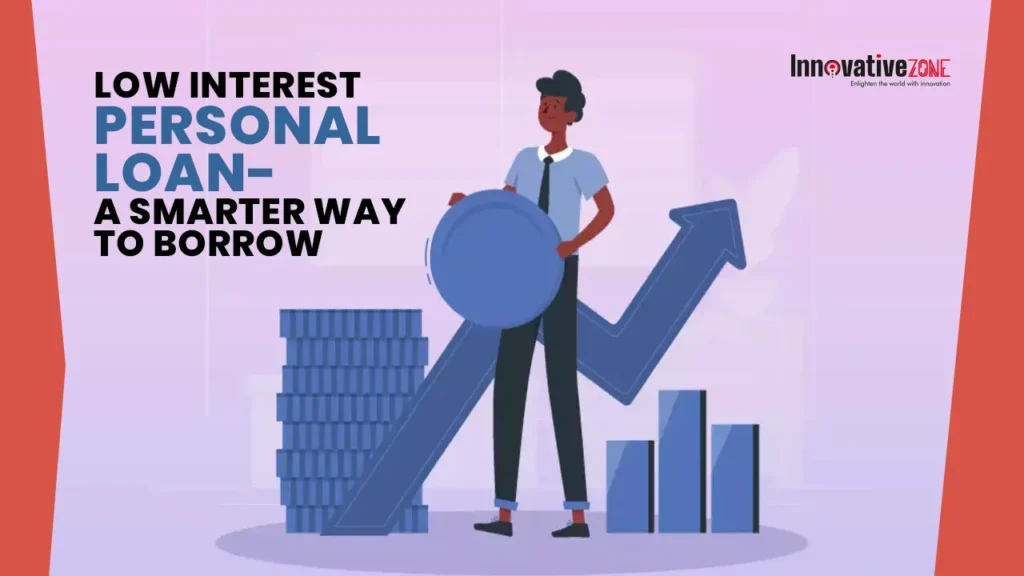Personal loans have now become an immediate financial tool for covering nearly any kind of expenditure, from a medical crisis to home renovation and vacationing. Although it is easy to obtain a personal loan, the interest rate you receive can significantly impact your overall repayment. Low-interest personal loans are thus the smart borrower’s first choice. They keep the cost of borrowing low while offering financial flexibility. In this blog, we will find out what low-interest personal loans are, how to qualify for one, where to find them, and why they are a better alternative than credit cards or high-interest loans.
What is a Low Interest Personal Loan?
Low interest personal loan is a form of unsecured loan provided with a lower rate of interest in relation to normal personal loans. Such loans are usually provided to borrowers with good credit scores, consistent income, and minimal debt-to-income levels. Due to the smaller rate, the total cost of borrowing is decreased, and thus the monthly EMIs become easier to handle.
Let us consider a brief example:
Suppose you borrow a loan of ₹2,00,000 at 10% annual interest for 2 years. You would be required to pay around ₹9,200 in EMI. But if the rate of interest is 14%, your EMI would be around ₹9,600. With time, those thousands will be nothing compared to the amount!
Advantages of Low-Interest Personal Loans
Borrowing a low-interest personal loan has several advantages:
- Lower Monthly EMIs
The lower the interest, the lower your Equated Monthly Installment (EMI), and it becomes easier for you to manage your finances. - Reduced Total Interest Outgo
You pay less money as total interest, meaning your loan is more cost-effective in the long term. - Quick Approval and Disbursal
Most lenders offer instant approval and same-day disbursal if you meet their eligibility criteria, ideal for urgent needs. - No Collateral Required
Most personal loans are unsecured or collateralized, hence readily available to salaried and self-employed individuals. - Flexible Tenure
Tenure for the loan can be between 12 and 60 months, providing you with the convenience of choosing a repayment cycle that suits your finances.
Factors That Affect Your Interest Rate
Before you avail yourself of a low-interest personal loan, it is important to understand what affects your eligibility and interest rate:
- Credit Score
Lenders prefer candidates with a credit score of over 750. The greater your score, the better your chances are of getting a low-interest rate. - Income Level
A consistent and high income guarantees lenders that you can repay the loan, leading to a higher probability of availing a lower rate. - Employment Type and History
Salaried individuals employed by well-reputed organizations or government jobs are likely to receive improved loan offers. - Existing Debt
If you already have high debt or have several loans, then you can be deemed a riskier borrower. - Loan Amount and Tenure
Smaller loan amounts with shorter tenures typically have lower interest rates.
How to Get a Low-Interest Personal Loan?
This is how you can maximize your chances of getting a low-interest personal loan:
- Improve Your Credit Score
Keep a check on your credit report from time to time and pay bills and EMIs on time. - Compare Loan Offers
Don’t accept the first offer that comes along. Utilize online websites or apps to compare rates and terms of various lenders. - Choose a Trusted Lender
Be with proven and reliable lending sites with clear terms, like Stashfin, which is a reputable fintech site that provides fast personal loans at competitive rates of interest and minimal documentation. - Take Pre-Approved Offers
If your credit card company or bank sends you a pre-approved loan, check the rate of interest. Pre-approved offers are usually offered at lower interest rates. - Use a Loan Eligibility Calculator
This calculator will give you an approximate idea of the amount of loan and interest rate that you may be eligible for, based on your income and credit score.
When Should You Consider a Low-Interest Personal Loan?
Here are some ideal scenarios to opt for a low-interest personal loan:
- Debt Consolidation: Merge multiple high-interest loans or credit card dues into one affordable EMI.
- Medical Emergencies: Pay for surgeries or treatments without worrying about high interest.
- Home Renovation: Fund your dream makeover without dipping into your savings.
- Education Costs: Finance courses, certifications, or tuition fees at manageable rates.
- Wedding Expenses: Cover big-ticket events with lower financial stress.
Caution: Do not Chase Only the Lowest Rate
While a low interest rate is important, you should also evaluate:
- Processing Fees
- Prepayment or Foreclosure Charges
- Hidden Costs
- Customer Service Quality
Make sure the loan fits your financial goals, not just your wallet today, but tomorrow as well.
Final Thoughts
A low interest personal loan can be a financial lifesaver when used wisely. It helps you manage expenses without getting trapped in a cycle of high-interest debt. Whether you are consolidating debt, handling a family emergency, or funding a big goal, choosing a loan with favourable terms is key to financial stability. Not only does it ease the burden on your monthly budget, but it also gives you the flexibility to plan your finances more effectively. With responsible repayment, such loans can even boost your credit score over time, making future borrowing easier and more affordable. With platforms like Stashfin, you can explore loan options with competitive rates, fast disbursal, and user-friendly service- all from the comfort of your phone.
Before you apply, check your credit score, compare lenders, and use EMI calculators to make informed decisions. In the world of borrowing, being prepared is half the battle.


